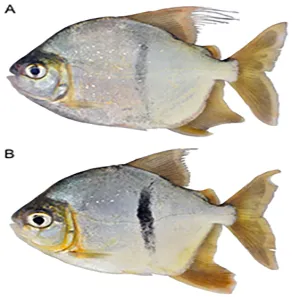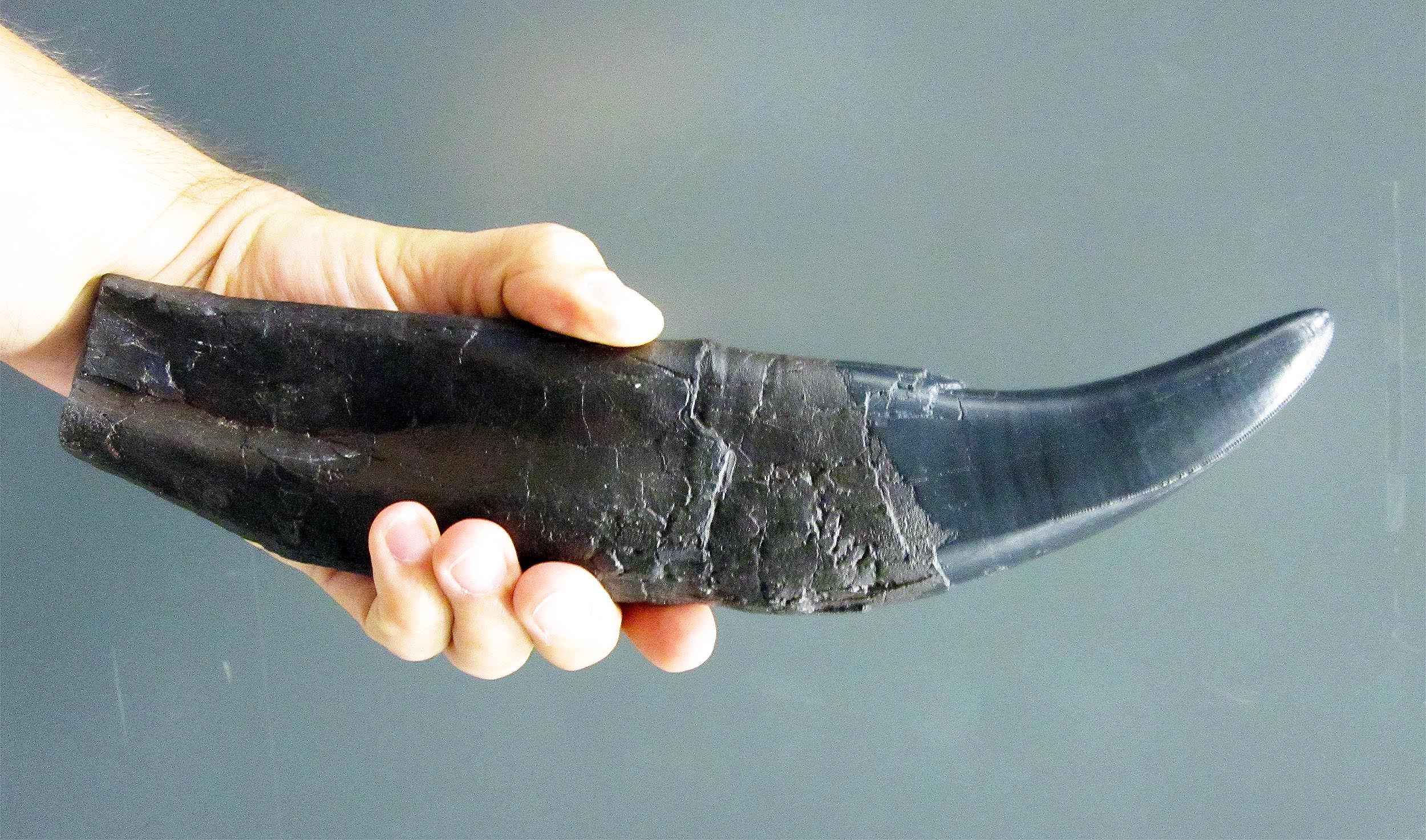Myloplus sauron, a newly described Amazonian fish, looks like trouble at first glance. Its round silver body wears a stark black stripe that tapers toward the belly, a pattern that recalls the fiery “Eye of Sauron” from The Lord of the Rings.
Yet appearances mislead. The fish is a peace loving herbivore equipped with human style molars instead of razor blades. Dr Rupert Collins of the Natural History Museum in London, senior curator of fishes, helped lead the international team responsible for the finding.
“As soon as my colleagues suggested the name for this fish, we knew it was perfect for it. Its pattern looks a lot like the Eye of Sauron, especially with the orange patches on its body,” Collins said.
Decoding Myloplus sauron
Myloplus sauron belongs to the Serrasalmidae family, the same clan that includes the infamous piranhas.
Its relatives called pacu are mostly plant eaters, and the new species follows that script, using flat, stubby teeth to munch fruits and seeds rather than flesh.
A close look at those teeth shows square crowns and enamel ridges that grip and crush fibrous food.
DNA barcoding and detailed scale counts confirmed that the fish is distinct from two look alike pacus long lumped together with M. schomburgkii.
Those genetic tools revealed three separate lineages: the newly named M. sauron in the Xingu River, M. aylan in western Amazon tributaries, and a rediagnosed M. schomburgkii spread across shield rivers farther north and east.
Why the Eye of Sauron fits
The Xingu’s rocky clear water lets sunlight reach the riverbed, turning fish into living billboards. M. sauron amplifies that spotlight with a vivid orange blush on its flanks and blood red fins that accentuate the central stripe.
Collins notes that naming a species after a cultural icon helps people remember the discovery and, more importantly, the river it inhabits.

Public attention can translate into support for protecting the Xingu’s unique rapids, which already face altered flows from one of Brazil’s largest hydroelectric dams.
Myloplus sauron teeth built for plants
Unlike the triangular blades of piranhas, pacu teeth are nearly square. They meet edge to edge like a set of pruning shears, ideal for cracking palm nuts or slicing thick leaves.
Studies of feeding mechanics show that these teeth distribute pressure evenly across the bite, preventing cracks while maximizing crushing force.
That adaptation matters because the Amazon’s flood pulse delivers seasonal windfalls of fruit; fish able to process tough skins enjoy a buffet when trees overhang flooded banks.
Taxonomists have cataloged about 2,500 fish species in the Amazon, yet an estimated 34 to 42 percent of the basin’s freshwater fishes remain undescribed.
In practical terms, nearly one in three fish that swims past a researcher’s net could still lack a formal name.
That uncertainty complicates conservation. Without reliable species lists, it is hard to assess which populations are thriving and which are shrinking under pressures such as mining runoff, overfishing, or dam construction.
Mapping a species’ narrow home
Myloplus sauron lives only in the Xingu River Basin, a sun drenched tributary that cuts through both Brazil’s Pará and Mato Grosso states. The basin already boasts more than 600 recorded fish species, seventy of which occur nowhere else.
Researchers collected most M. sauron specimens below the Tamaracá waterfall, where swift water tumbles over polished granite.
The fish’s deep body and strong pectoral fins suggest it hugs eddies behind boulders, grazing on algae and fallen leaves swept into crevices.
To confirm Myloplus sauron was a separate species, researchers combined both physical and genetic data. They used DNA barcoding, a method that compares short sequences in mitochondrial DNA, to distinguish M. sauron from its close relatives M. aylan and M. schomburgkii.
The team also analyzed dozens of traits like fin rays, body shape, scale counts, and the distinct black stripe. Together, the physical measurements and genetic divergence gave researchers enough evidence to confidently describe M. sauron as its own species.
What the find means for conservation
A flashy new name does not guarantee safety. Large dams upstream can flatten seasonal floods that once triggered pacu breeding runs, while unregulated gold mining clouds clear channels with silt and mercury.
For now, the team lists M. sauron as “Least Concern” because its range extends along several hundred river miles. Even so, Collins argues that early recognition is vital.
The discovery also highlights the value of DNA barcoding, a technique that flags hidden lineages before they vanish.
Every barcode added to global databases sharpens our picture of Amazon diversity and guides future field expeditions toward rivers likely to house more surprises.
The study is published in Neotropical Ichthyology.
—–
Like what you read? Subscribe to our newsletter for engaging articles, exclusive content, and the latest updates.
Check us out on EarthSnap, a free app brought to you by Eric Ralls and Earth.com.
—–
Source link



